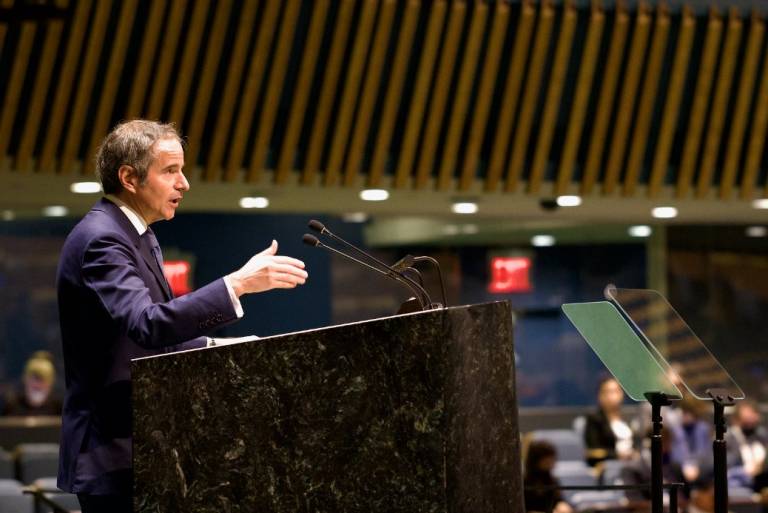Student Blog by Miika Vartiainen*
Social media has become a strong part of our daily lives. Social media services allow you to quickly share information ideas with your network. With the development of smartphone technology, social media services have moved from the computers to our pockets and hands, making it easier to transmit information to your network regardless of time, place, and location. According to the Ericsson 2021 mobility report (2021, 5), at the end of 2021 there were 6.3 billion smartphones in use worldwide, covering almost 80% of all mobile phone subscriptions. The report predicts that there will be 7.7 billion smartphones in use in 2026, equivalent to 86% of all mobile subscriptions made at the time.
Sharing information on social media can be used for good and bad purposes. With good intentions, we can read current information, news, and other important events quickly and stay in control of the information. Social media has made it possible to influence people’s thoughts, opinions, and behavior, also in a negative context. There are two different ways to make an impact via social media. One way is to try to influence the way people think. Social media enables close two-way communication aimed at influencing people, their thoughts, opinions, and behavior. Another way is to motivate people to perform a certain action.
Social influence strongly controls our behavior and people have an inherent tendency to adapt to the social network (Gupta & Brooks 2013, 360–361.) Influencing through social media can affect us unconsciously if we just immerse available information uncritically without reflecting on the reliability of the sources. In the background, we may be influenced by our belief in the legality of a particular thing, and we maybe already looking for a certain perspective or interpretation from the information. Without a critical review of the data, our pre-directed perspective remains subjective.
Ravi Grupta and Hugh Brooks (Ibid., 361–363) present a model on the relationship between information, frames, and behavior. In the model, the information we are looking for passes through our filters, which will form our frame. When we have a frame created, we start to process the information in our brain and that information will affect our behavior. Our frames are often filtered by rational, logical arguments that contain a lot of objective facts. False news is often reminiscent of rational, logical, and objective arguments containing objective facts. If we focus on looking at a topic based on just one source, we may be exposed to the purpose of misinformation or even fake news to modify our thoughts and behavior.
The purpose of false news is to promote a particular view or opinion about the issue at hand and to persuade people to accept false ideas, causing negative effects on individuals or society. Spreading fake news and misleading people pose even more significant challenges to our society and have become a serious concern. The possibility to be anonymous in social media, the freedom of users to create content, and the cross-border geography encourage the distribution of fake news (Talwar et al. 2020.)
Fake news distributor needs motivation, a social network to spread the mis-/disinformation, as well as appropriate tools and services. Without these three tips of “The Fake News Triangle”, the disinformation spread will not succeed and reach its target audience (Gu et al. 2017, 6). It is here where social media provides a great tool and platform for spreading fake news. For example, social media influencing can be used to spread violent ideologies and incite aggression regardless of traditional geographic or cultural constraints (KhosraviNik & Amer 2020). We can be influenced on many different levels depending on the purpose. We can be led to think that a particular company has done something wrong against us and we need to put up a boycott. The lynching operation on social media often gets big frames and people may not know the purpose behind lynching or the knowledge is based on a completely one-sided view. In the worst case, influencing people can lead to violence or acts of terrorism against other people, even against key institutions of the society.
So, to sum up, the advancement of technology and the rise of social media has given us a double-edged sword. Technology and social media allow people to share information, opinions and interact with others online, but also the opportunity to negatively influence our information, opinions, and behavior. When browsing information presented on social media, we need to consider whether we ask “Mirror, mirror tell the truth…”, or do we stop to think critically about who is behind the information, what is the perspective and what is this particular piece of information in this context trying to achieve. Be critical and look at it from different perspectives. Don’t trust the mirror blindly!
* This student blog post has been done as part of the course SAFER.SG.310 Societal Security: Contemporary Challenges in the Masters Degree Programme in Security and Safety Management (SAFER) in fall 2021.
References
Ericsson (2021): Ericsson mobility report. November 2021. https://www.ericsson.com/4ad7e9/assets/local/reports-papers/mobility-report/documents/2021/ericsson-mobility-report-november-2021.pdf.
Gu, L., Kropotov, V. & Yarochkin, F. (2017): The Fake News Machine How Propagandists Abuse the Internet and Manipulate the Public. A TrendLabs Research Paper. https://documents.trendmicro.com/assets/white_papers/wp-fake-news-machine-how-propagandists-abuse-the-internet.pdf.
Gupta, R. & Brooks, H. (2013) Using social media for global security. 1st edition. Indianapolis, IN: John WIley & Sons, Inc.
KhosraviNik, M. & Amer, M. (2020): Social media and terrorism discourse: the Islamic State’s (IS) social media discursive content and practices. https://doi-org.libproxy.tuni.fi/10.1080/17405904.2020.1835684.
Talwar, S., Dhir, A., Singh, D., Virk, G.S., Salo, J. (2020): Sharing of fake news on social media: Application of the honeycomb framework and the third-person effect hypothesis. https://doi.org/10.1016/j.jretconser.2020.102197.





